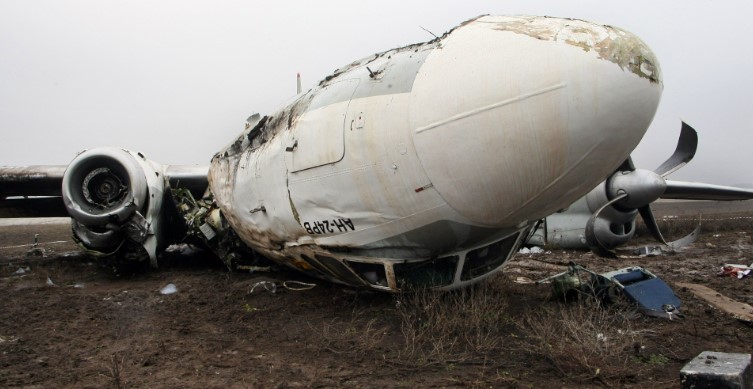A Soviet-era plane crash has shaken Russia’s Far East. On July 24, an Antonov An-24 aircraft with 49 people onboard went down near the city of Tynda in Amur Oblast, sparking a large-scale search and rescue operation.
🇷🇺 Plane Crash in Amur: An-24 Aircraft Vanishes Near Tynda
Angara Airlines was operating the twin-engine aircraft on a domestic flight from Khabarovsk to Tynda, with a stopover scheduled in Blagoveshchensk.
When the plane crashed, it was only 15 kilometers from its destination. On its initial approach, the plane had failed to land. It started a second attempt and vanished from radar shortly after. There were six crew members and forty-three passengers, including five youngsters.
Emergency sources claim that the aircraft lost all touch after failing to check in at a crucial waypoint close to the final approach. Russian rescue services started looking for the plane right away. A Mi-8 helicopter and a 12-person ground rescue team were first sent to the region. When no signs were found, the Ministry of Emergency Situations (EMERCOM) brought in more aerial assets to support the search.
The plane crash site, located in a dense and mountainous part of Amur Oblast, has made rescue efforts difficult. Rosaviatsiya, Russia’s aviation authority, confirmed that emergency crews were working without pause to locate the wreckage. The incident has once again highlighted deep-rooted concerns about Russia’s aging fleet and the risks posed by continuing to operate old aircraft.
🛫 Aircraft Details: An Aging Workhorse Still in Operation
The Antonov An-24 is a twin-turboprop aircraft first developed in the Soviet Union in the late 1950s. The aircraft involved in this plane crash was believed to be nearly 50 years old. Despite its advanced age, it had a valid airworthiness certificate extended to 2036.
Planes like the An-24 were once widely used for regional flights across the former Soviet Union. While many countries have retired such aircraft long ago, Russia continues to operate them in areas with limited transportation options—especially in remote zones such as the Far East.
The growing reliance on old Soviet-era aircraft has intensified since Western sanctions were imposed following Russia’s military actions in Ukraine. These sanctions cut off access to modern aircraft components, servicing equipment, and certified international maintenance support.
Corporate Crime of the Century? Boeing Faces Fraud Trial Over Deadly 737 MAX Crashes!
In response, Russian aviation authorities extended the permitted lifespan of aircraft like the Yak-40 and An-24. In some cases, the operational age was extended up to 60 years. These aircraft now serve socially critical routes where road and rail options are minimal or non-existent.
However, the latest plane crash shows the potential dangers of depending on aging aircraft without access to modern upgrades or proper spare parts. It also raises questions about the overall safety of air travel in isolated Russian territories.
✈️ Plane Crash Highlights Domestic Aviation Crisis in Russia
This plane crash has reignited focus on Russia’s struggling aviation sector. Since sanctions began, the country has faced a steady decline in aircraft availability, maintenance support, and production capabilities.
The Kremlin had unveiled an ambitious plan to build over 1,000 new planes by 2030, including 105 TVRS-44 “Ladoga” airliners and 51 Il-114-300s. However, progress has been slow. Only five aircraft have reportedly been completed so far—three Tu-214s and two Il-96-300s.
Due to manufacturing delays and resource limitations, the government cut its aircraft production goals by 50% in early 2025. Meanwhile, the aging fleet continues to shrink. In 2024 alone, 58 planes were removed from active service.
China’s Warplane Fails Again: Myanmar F-7 Fighter Jet Crashes, Pilot Killed
According to recent figures, Russia’s civilian aviation fleet now consists of just 1,138 airplanes and 920 helicopters. Experts have warned that without rapid improvements, more incidents like this plane crash may occur. The Far East, in particular, remains highly dependent on air routes due to poor road infrastructure and vast distances.
In another serious aviation incident earlier this year, a Russian air defense system mistakenly targeted a civilian airliner near Moscow, confusing it with a drone. Though no harm came to the aircraft, the event underscores the growing pressure and risk facing the nation’s air travel system.
With limited resources and an over-reliance on outdated aircraft, aviation safety in Russia remains a growing concern—especially following this devastating plane crash in Amur Oblast.

